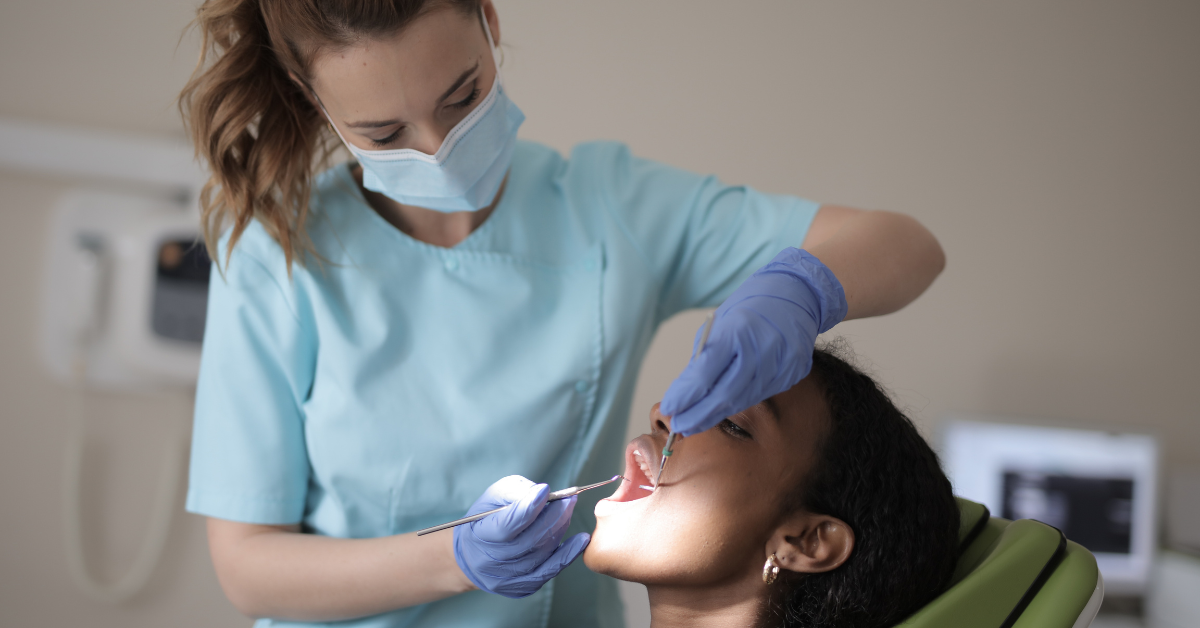
What You Can Expect During a Professional Dental Cleaning Session

*Collaborative Post
For many people, a dental cleaning is something they know they should keep up with, yet the thought of booking that appointment often stirs a mix of hesitation and uncertainty.What exactly happens during the session? Is it uncomfortable? Will it take long?
Having a clear picture of the process makes it far less daunting. And if you have been considering booking in with a dentist near Richmond, understanding each stage of a cleaning can help you walk into the clinic with confidence rather than nerves.
Start with a Careful Initial Examination of the Mouth
Every cleaning starts with a close look at your teeth and gums. Using a small angled mirror, the hygienist checks for the tell-tale signs of trouble, such as plaque buildup, inflamed tissue, or the earliest hint of a cavity. This step is quick, but it is far from superficial.
Think of it as the roadmap for the session ahead. If anything unusual shows up, the dentist may be called in to confirm the best approach before the cleaning continues.
Removing Plaque and and Hardened Tartar Deposits
Once the inspection is complete, the focus shifts to scaling. This is where the hygienist uses a fine instrument to remove the layers of plaque and tartar that have settled around the gum line and between the teeth. You may hear a faint scraping sound or feel slight pressure, but discomfort is rare.
It is worth noting that tartar cannot be brushed or flossed away at home, professional tools are the only way to get rid of it. Removing these deposits is one of the most effective ways to stop gum disease from taking hold.
Polishing the Teeth for a Smooth and Clean Finish
After scaling, the polishing stage begins. A rotating brush paired with a gritty paste works across each tooth, buffing away surface stains and smoothing the enamel.
The sensation can feel unusual at first, the paste has a sandy texture but the end result is a fresher, cleaner surface that makes it harder for plaque to stick in the days and weeks ahead. Many patients describe this stage as the moment their mouth finally feels renewed.
Professional Flossing and Rinsing Away Any Debris
Even if you floss daily, there is something reassuring about having it done by a professional. The hygienist threads floss carefully between each tooth, not just clearing out debris but also gauging the health of your gums. Bleeding or tenderness here can be an early signal of gum issues, something worth addressing sooner rather than later.
Once the flossing is complete, you will usually be asked to rinse. Some clinics also include a fluoride treatment at this stage, particularly for patients with a history of cavities. This extra measure strengthens enamel and offers ongoing protection between visits.
Personalised Guidance and Discussion of Next Steps
Beyond the cleaning itself, one of the most valuable takeaways is the advice you receive. The hygienist may point out areas where plaque tends to collect, recommend a softer toothbrush, or suggest tools like interdental brushes for tighter spaces.
If they notice signs that warrant further care, anything from small fillings to an orthodontic review, this is the time you’ll hear about it. Otherwise, the appointment usually ends with a reminder to return in six months, a simple rhythm that keeps your oral health on track.
Takeaways
Daily brushing and flossing lay the groundwork for healthy teeth, but they can only go so far. Professional cleanings step in where your toothbrush can’t, tackling tartar, brightening enamel, and spotting problems before they become bigger concerns.
If you have been putting off your visit, or you are searching for the right clinic to trust, making routine cleanings part of your health care is a decision your future self will thank you for.
*This is a collaborative post. For further information please refer to my disclosure page.




